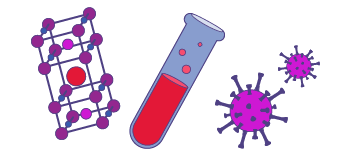The use of mechanical resonances to determine the elastic moduli of materials of interest to condensed matter physicists, engineers and materials scientists is steadily evolving. With the massive computing capability found in an ordinary personal computer, it is now possible to find all the elastic moduli of low-symmetry solids using sophisticated analysis of a set of the lowest resonances.
Resonant ultrasound spectroscopy (RUS) is one of the most versatile modulus measurement and nondestructive evaluation techniques available. It is applicable to many common materials, high-temperature superconductors, stabilized ceramics, sintered alloys, semiconductors and more.
The descriptor "resonant ultrasound spectroscopy" (RUS), first coined by Migliori in 1987 is a reflection of the richness of information revealed by the natural modes of vibration, or resonances, of solids. RUS, much like other high-precision modulus measurement methods, is sensitive to both microscopic and macroscopic properties of an object. Elastic moduli, ultrasonic attenuation, and symmetry of materials can all be probed by using RUS.
RUS is qualitatively different from other "ultrasonic" techniques because it is sensitive to all the components of the elastic tensor, "sees" only the true thermodynamic dissipation (a pulse's echo can have its amplitude reduced by dissipation, errors in parallelism of the faces, and transducer bond absorption). It is extremely easy to use, requiring no transducer bonds for sample mounting. Codes for the extraction of the full elastic tensor for cylindrical and rectangular parallelepiped specimens with symmetries from isotropic through orthorhombic are available.
RUS is applicable to material science, condensed matter physics, and to measure parameters for input into finite element static and dynamic structural analysis codes.
The MagLab RUS development team, led by Albert Migliori and Fedor Balakirev provides resources for the data acquisition and analysis of RUS measurements. These resources at the Los Alamos National Laboratory GITHUB site include LABVIEW data acquisition software, firmware to run that software on a 14-bit Red Pitaya microcomputer, circuit designs for a piezoelectric preamp, and piezoelectric driver to interface to the microcomputer.
Simple analysis codes for cylinders and rectangular parallelepiped samples, advanced analysis codes with auto-guessing of initial values, and complete instructions are available upon request at http://www.rusalamocreek.com/ as well as a complete hardware and software turnkey RUS package that uses Los Alamos National Laboratory LABVIEW acquisition software from the Los Alamos GITHUB.
The work of this group is supported by the National Nuclear Security Administration, Florida State University and the National Science Foundation.
Resistive Magnets
Superconducting Magnets
Hybrid Magnet

Explore our magnet schedule to see what exciting research is happening on our stellar fleet of instruments right now.
A. Migliori, et al, Implementation of a modern resonant ultrasound spectroscopy system for the measurement of the elastic moduli of small solid specimens, Review of Scientific Instruments (2005) Read online.
A. Migliori, et al, Resonant ultrasound spectroscopic techniques for measurement of the elastic moduli of solids, Physica B (1992) Read online.
Last modified on 13 December 2023